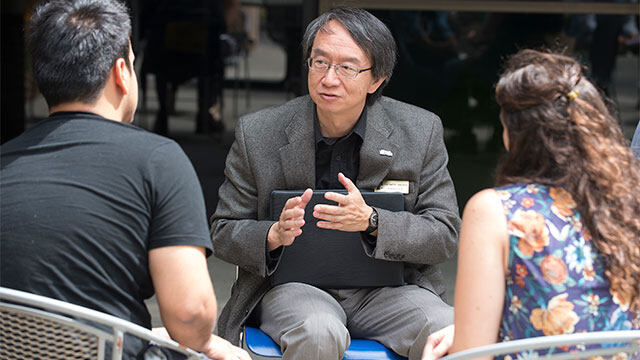Henry Woo’s exemplary work designing and building public education facilities in the San Gabriel Valley merited distinction from a congressman. Woo (’77, architecture; 85, master’s in architecture) was recently honored by U.S. Representative Gilbert Cisneros (CA-39) with the 2020 Asian American Pacific Islander Trailblazer Award.


Woo, a LEED-accredited architect with more than 35 years of experience in architecture and planning and one of the most engaged alumni of the College of Environmental Design, was recognized for his role in designing many public buildings and projects in the 39th Congressional District, which encompasses parts of the East San Gabriel Valley, north Orange County and portions of San Bernardino County. Woo was nominated for Trailblazer Award by Michael Woo (no relation), former dean of the College of Environmental Design and the first Asian American elected to the Los Angeles City Council (1985-1993).
“When I received the notice from the Congressman’s office, I was definitely surprised, but at the same time, I was extremely honored and proud that I’ll be one of the role models for our young men and women, particularly in the Asian American communities,” said Woo, president and principal architect of Walnut-based Henry Woo Architects, Inc.
Cisneros established his district award after assuming office in 2018. Every May in celebration of Asian Pacific American Heritage Month, he recognizes 10 Asian American and Pacific Islander individuals in his district that have demonstrated leadership in business, education and community engagement. The date of this year’s awards ceremony is on hold due to the coronavirus pandemic, said Tammy Peng, Director of Constituent Services.
Woo has hands-on experience working with municipal, educational and institutional agencies. A LEED-accredited professional for sustainable design, he has consistently applied his training in energy conservation to environmentally responsive and sustainable design since the late 1970s.
His most notable projects include Diamond Bar High School Aquatic Center; the Fullerton High School New Science Building annex; Endeavor High School for Special Education; the Rowland Water District Headquarters entry addition; and numerous modernization projects for the Rowland Unified, Walnut Valley Unified and the Fullerton Union High School districts. Woo also served as Fullerton Joint Union High School Districts’ oversight master architect for the Measure A-A bond.
“Because of my focus in the public education facilities, my proudest achievement is neither a single project, a few projects, nor the scale of projects,” Woo said. “It is actually the entire ‘period of career life’ that I found myself helping others in achieving their dreams for better facilities and environment, so that they could better serve their community needs for years to come.”
Woo was a longtime member of the Partners Circle, the professional alumni advisory board of the College of Environmental Design. He was an active participant in events such as ENV Speed Mentoring. He and his wife Lily Y. Woo (’83, computer information systems; ’85, master’s in business administration) were the benefactors behind the Department of Architecture’s quarterly professional lecture series. The Woos’ Bronco connections extend beyond their post-graduation involvement. Their daughter, Jennifer M. Woo, is a 2009 alumna of the Cal Poly Pomona’s communications program.
Henry Woo in his own words:
What motivates your community engagement?
“As a Chinese American I was taught and trained to work hard, be practical, and to focus on my family life. After starting my own architectural practice, I had to do much more than that. I needed to connect with the communities in order to get work as well as to learn from the business communities. Because to understand the social economic issues, as well as interacting with people and organizations that serve the local communities, are areas beyond my years of architecture training.
Instead of only practicing in an internally focused profession for design work, my engagement with various organizations had given me the opportunities to experience first hand, in working with diverse culture and communities from affluent areas to social-economically challenged neighborhood. I believe, in the end, my work was about what the community can benefit from my completed projects.”






































